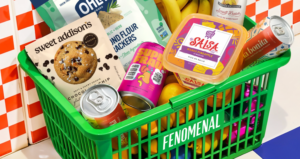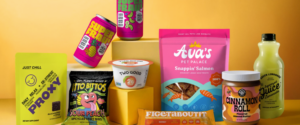- How to Set Up your CPG Business for E-Commerce Success - May 14, 2020
- 3 Costly Mistakes Entrepreneurs Make When Working with Co-packers - February 25, 2020
- Co-packer Costs? How much does it cost to get your food or beverage product produced? - April 8, 2019
Pricing and margin can be one of the most important (and confusing) parts of getting your food or beverage business off the ground. It’s incredibly important to know your costs and then price accordingly.
In order to have a good understanding of how pricing in the food industry works, it’s important to know a few key terms:
- Cost of Goods Sold (COGS): This includes all of the expenses that go into the production of your final product. COGS includes raw material costs (ingredients & packaging) & production costs. When working with a turnkey co-packer, your COGS will be the price per unit that you pay for your product. If working out of a commercial kitchen or at home, remember to include your own labor costs as this will give you the right cushion for when you do move to larger production.
- Gross Profit Margin: Margin is what’s left over in revenue after paying for COGS. Each link of your supply chain will take a margin percentage. Below are some typical margin percentages that you will need to prepare for:
Brokers 5-7%
Distributors: 20-30%
Retailers 30-50%
- Operating Expense: These are all other business expenses outside of cost of good sold. Overhead, marketing & sales, additional labor etc.
- Net Profit: This is your bottom line. Your gross profit – operating expense. Many food businesses will be operating at a net loss for the first several years (hence all the venture capital money!)
Determining the right price for your product is very important, and there is a lot that you need to consider. Many brands will make the mistake of doing top down pricing. They decide that they want to sell their product for $4.99 – however after everyone takes their cut, the brand is left over making almost nothing on each unit. That’s not sustainable and therefore you need to start with your costs and go from there.
If you are already working with a co-packer then you’ll likely know your COGS. If not, you can determine it by finding out the following:
COGS = Ingredient costs/unit + packaging costs/unit + total labor costs/unit
Now that you have figured out your cost of production per unit you can move on to pricing. First off, you’ll want to determine your gross margin (the amount your business will make per unit). Now this can really vary depending on which sales channel. For example if you are selling through the retail channel, your margin is going to be much less, as there are a lot of other parties involved (broker, distributor, retailer). But if you are selling direct to consumer, your profit margin will be much higher as it’s just you (more on that later!). We will lay out an example below to make it easier to understand.
So let’s start with the most expensive channel (distribution & retail). At the very least, a successful food business should be aiming for 30% profit margin. Meaning the difference in the price you pay for production (COGS) and the price in which you sell it to the distributors. So let’s run through each link in the supply chain and determine final pricing.
As an example lets stay the COGS for your product is $1.50. In order to account for your 30% margin. You’ll do the following calculation: COGS / (1- margin %).
COGS: $1.50
Brand Margin: 30%
Price to Distributor: $1.50 / (1-.3) = $2.14
Brand Gross Profit per unit: $.64
So that means you’ll make $.64 gross profit per unit. Now the distributor will typically take a 20-30% margin when selling to the retailer:
Distributor price: $2.14
Distributor Margin: 25%
Price to Retailer: $2.14/(1-.25)= $2.85Keep in mind, if you skip the distributor and sell direct to retail – you’ll still use this price, it will just increase your brand profit margin – which is a good thing!)
Now that the retailer has your product they are going to price it with a 30-50% margin. So in this example, if the retailer takes a 40% margin, your product will be priced on the shelves for around: $4.75
Retailer price: $2.85
Retailer margin: 40%
Final product price to customer: $2.85/(1-.40): $4.75
Here is a chart to sum up our example:

This is a pretty simple example but keep in mind there are a lot of additional factors that can come into play when working through your pricing. For example sometimes shipping costs will be built in, or you might need to use a broker which will have an additional 5-7% margin that you’ll need to account for.
Also, your profit margin will fluctuate depending on which sales channel you are using. If your product is selling to consumers for $4.75, your profit margin per unit with distribution and retail might only be $.64 but if you are selling direct to consumer from your website, your profit margin will be closer to $3.25 per unit! So take a look at each channel and determine which is the best option for your business. Many times, it’s a combination!
Brand gross profit margin for each channel with a $4.75 retail price:
- Distribution: 30% -> $.64
- Direct to Retail: 47% -> $1.35
- Direct to Consumer: 68% -> $3.25
It’s a good exercise to determine the lowest price you are willing to sell your product for, while still making the profit margin necessary to keep you in business. Then start testing the market and see how high consumers are willing to pay for your product. There is typically a happy medium in sales velocity and price.
Pricing can be confusing, and an ever evolving process. The best way to improve profit margin is to lower your costs, so be responsible and always look for ways to be more efficient and save money without risking quality.



